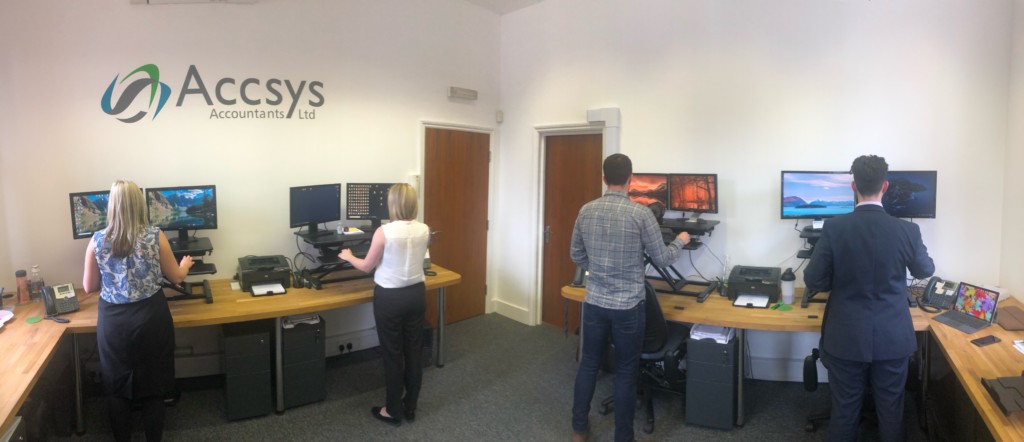
By now, many people have heard about standing desks and maybe even read reports on their potential to change lives. Many articles focus on the negatives of sitting: sitting at a desk is as bad as heavy smoking, people who sit at their desks have shorter life spans, or sitting all day promotes terrible posture. The solution? Standing desks. Desks that allow workers to stand so they can improve their health, productivity and quality of life.
People are turning to stand desks more and more, but are they better than sitting desks? Here are the pros and cons of standing desks.
Pros
Research suggests that standing lowers your risk of weight gain and obesity, it is thought that within a day an equal amount of time spent standing has shown to burn over 170 additional calories.
This could be one of the reasons you pick a stand-up desk over sitting. Studies suggest sitting for too long is potentially linked to an increased risk of coronary heart disease and kidney disease. While that sounds scary, those studies don’t prove that sitting all day causes those health problems, just that people who sit all day tend to have a greater risk of such issues. There could be other factors at play.
Still, standing all day does change a person’s posture and takes more energy than sitting, so it burns more calories, though there is disagreement about how many calories. For those who use exercise workstations (desks that combine a treadmill component, for example), even more, calories are burned, and workers are exercising while working.
Some workers say they enjoy standing desks. Its increased energy and alertness, greater engagement with co-workers, and better core strength as positives.
Cons
There are some concerns about standing desks, however. Standing is more tiring than sitting and can negatively affect productivity. People tend to have more difficulty with tasks that require fine motor skills when they stand than when they sit. Standing is also linked to varicose veins and puts pressure on a person’s circulatory system.
If your employees work longer than eight-hour days, a standing desk can be exhausting, not to mention hard on the legs. You could also experience swelling of the feet and ankles if you stan in one place for a long period.
While sitting all day has been linked to heart disease, so has standing. A 2017 study published in the American Journal of Epidemiology found that standing for long periods throughout the day is linked to two times the risk of heart disease.
Final thoughts
Sitting and standing at a desk for too long, both appear linked to increased health risks. If you’re looking to science for the answers about standing desks, you may have to look further.
Some workers might prefer a standing desk, but if their concerns are about getting enough movement in a day, not hurting their posture, or improving their health, there are more effective routes to go.
Provide ergonomic desks and chairs that properly support their heads, necks, and backs.Encourage your workers to get up at least every 30 minutes to stretch their bodies or walk around for a few minutes. This will stop them from sitting in the same position for too long and will give them some vital opportunities to move in a day, which will also help their circulation and improve their health.
Of course, there’s nothing wrong with providing employees with the option of a standing desk at work and seeing how much people use them if that’s what you want to do.
Our staff opinion
At Accsys Accountants we’ve had stand-up desks for over 2 months and feel that these are such a benefit to our day to day work life. Having these desks allows you to stand or sit at any time, you’re not just restricted. “it’s great to have the option to stand, especially in the afternoon when you get a little tired you can stand and stretch out a bit more and feel more alert when working” says Adam Williams a Client Managers Assistant.






